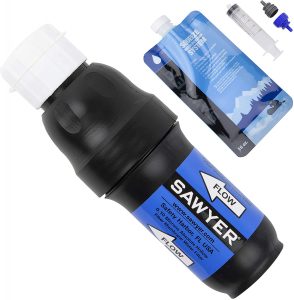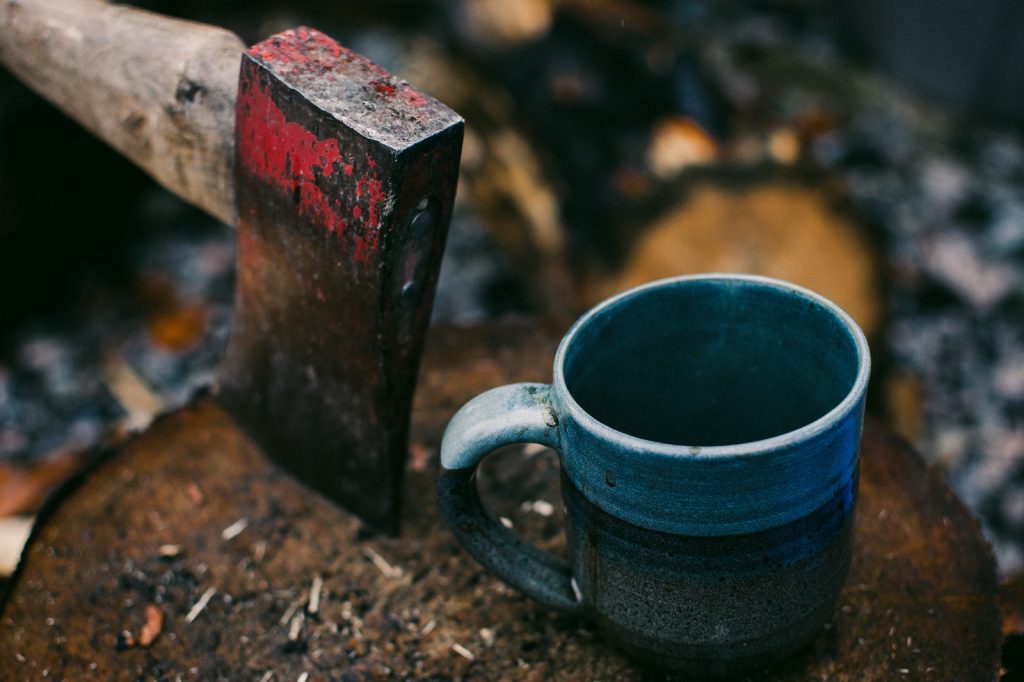Emergency preparation is something that we rarely must consider. It is not something that anyone wants to think about. No one wants to be in a situation where their life is at risk! However, what happens if you are put in such a situation? Maybe a natural disaster is imminent, and your home is unsafe?
Perhaps you need to escape from your current area. This is where a bug out bag is essential. An emergency bag like this can help you survive and move quickly if you are in imminent danger. In this guide, we have created a bug out bag checklist, and explain the usefulness of this type of kit.

What is a Bug Out Bag?
A bug out bag has many names. It may also be known as:
- Emergency bag.
- 72-hour bag.
- Go bag.
- Evacuation bag.
- Survival bag.
It is essentially a singular emergency survival kit – a “jack of all trades” kit that can be used in a variety of situations
Where does the term come from?
The “bug out” terminology comes from the United States Military and the Korean War. Soldiers were given the signal to but out if the current defensive position they held was being overrun. They would then retreat to safety, to a different position. Since then, the term has been adopted by many military organisations. Many military organisations also use the term “bail-out” as an alternative.
What is the purpose of a Bug Out Bag?
The main purpose of a bug out bag is so that you can evacuate your immediate location quickly in the event of an emergency or disaster. Having a bug out bag checklist and prepared bag allows you to evacuate in as little time as possible. As a result, this greatly reduces your chance of being hurt or caught up in the imminent event.
But what types of disasters do we mean? We have given a few examples below for your benefit:
- Hurricanes.
- Landslides.
- Earthquakes.
- Tsunamis.
- Flooding.
- Severe blizzards.
- War.
Essentially, any type of natural disaster, and human-made conflicts. For example, a bug out back checklist may be essential if you live in an area that has a high number of annual hurricanes or tornados. Alternatively, perhaps you live in a region of open conflict that has the potential to escalate.
Whatever the reason, a bug out bag helps you react quickly. You do not have to spend valuable time gathering essentials. Everything you need is ready in your bag. You can simply pick it up, strap it on, and evacuate safely. This is why creating a bug out back checklist, and formulating your bag is so important.
Bug Out Bag Checklist – The Essentials
So what items do you need in your bug out bag checklist? For easy digestion, we have split our checklist into categories:
- Hydration.
- Food supplies.
- Clothing.
- Shelter.
- Heating.
- First Aid.
- Hygiene.
- Tools.
- Lighting.
- Communications.
- Travel equipment.
Hydration
Water is possibly the most important thing in a bug out bag. Humans cannot survive without water for more than 72-hours. As a minimum, your bug out bag checklist should have 3 liters of drinking water (enough for 72-hours), a water bottle, and a water filter.
We have a guide on the best water filters here. These are fantastic devices that will allow you to purify stream and lake water to drink if your initial water supply runs out.

Food Supplies
Next, we have food supplies. Although the human body can last without food for approximately 3 weeks, having a supply of food will help boost energy levels and keep you going. The important thing to remember here is that you need to pack non-perishable foods. If you pack your bug out bag with perishable foods, they will not last, and you could end up with no food at all.
Ideally, you want enough food to last for the 72-hours minimum. Energy bars are a great food item to have. They are relatively small and easy to carry, non-perishable, and give you the nutrients you need to keep going. Also, you can find a range of dehydrated meals. Manufacturers like Summit to Eat create a range of dehydrated meals that you simply must add water to. These are brilliant providing that you have enough water to spare.
Clothing
Clothing is another essential category. You will need a range of different clothing to suit various weather conditions. The best advice we can give is to work in layers. If you prepare your clothes in layers, you can adapt easier to changing conditions.
Also, pack clothing according to your location. For example, clothing requirements for somewhere like Mexico would differ greatly from somewhere like Northern Europe. Finally, it is also advisable to pack two changes of clothes. This means you will always have one dry set ready to wear.
Clothing basics include:
- Underwear.
- Socks.
- Waterproof trousers.
- Fleece.
- Long sleeved-shirt.
- Waterproof gloves & hat.
- Waterproof jacket.
You ideally want a combination of a waterproof outer layer, and comfortable, but warm under layers.
Shelter
It is true that you can make a shelter from a variety of objects. However, in an emergency, you may not have the energy or focus to do so. Also, having somewhere comfortable to sleep and rest is important in these situations.
Therefore, having proper shelter is a must-have item in your bug out bag checklist. This should include a tent, a sleeping bag, and a blanket. The tent and sleeping bag should both be waterproof, but also lightweight and easy to fit inside your backpack.
Depending on your location, and climate, you may also want to include a tarp and a ground pad. These can provide extra protection if there is a greater chance of rain or poor conditions.

Heating
Keeping warm is important when you have evacuated the safety and comfort of your home. Hypothermia and other conditions can easily creep in and catch people unawares. It is therefore important to have some type of heat source. As a bare minimum, you should have the means to create a campfire.
Also, it is important to have several methods of starting a campfire. If one fails, you still have a backup. Whereas if you only pack one ignition source, for example, if it breaks, you won’t be able to start a fire at all. Therefore, your bug out bag checklist should include three ignition sources (lighters, for example), three lots of tinder, and waterproof storage to keep them in.

First Aid
Having a first aid kit is always a good idea regardless of the situation. For example, if you were wild camping, we would advise having a first aid kit. Alternatively, having a first aid kit in your car is also a great idea. Therefore, having a first aid kit in your bug out bag is also essential.
You can find a range of compact first aid kits like this Mini First Aid Kit online. This particular kit has 92 pieces including scissors, plasters, an emergency blanket, tweezers, bandages, a respirator, and tape, for example. Having a first aid kit can allow you to quickly deal with minor injuries such as cuts that could potentially become infected if left untreated.
You may also want to pack a small bottle of insect repellent spray if you live in an area where mosquitos and other insects are common.
Hygiene
It is not expected that you say impeccably clean during an emergency evacuation. However, having basic hygiene items can help avoid infections and a sharp deterioration of your health.
As a minimum we recommend having:
- Hand sanitizer.
- Bar of soap.
- Small towel.
- A packet of tissues.
- Travel toilet paper.
- Toothpaste & toothbrush.
These essential items allow you to maintain a basic level of personal hygiene without taking up too much space in your bug out bag.
Tools
Having a basic set of tools can help in an emergency. For example, what happens if you have packed some tinned food, but cannot open it? Or how about if you need to chop some firewood for a campfire? Tools are invaluable and can be used in many situations.
The following tools are ideal for your bug out bag checklist:
- Camping knife.
- Penknife or multi-tool.
- Camping hatchet.
A small camping knife or penknife is useful for general survival activities. Opening tins, cutting bandages, or chopping smaller campfire fuel, for example. Also, a hatchet is useful for firewood gathering, and for clearing a path if you are hiking through difficult terrain.

Lighting
Like a heat source, having multiple lighting items is also important. It is always important to have a fail-safe, and double-up on some items. Lighting is hugely important and can help your quick and safe evacuation. It will also help once you have evacuated, and you are out into the wild. It also means that you can evacuate safely during the night.
There are many types of lighting available. However, we would recommend having an LED headlight. This gives you a great light source, without using your hands. An LED torch is also a great item to have. Together with these lighting items, we recommend having a supply of spare batteries too. Check the battery types of the light you have and have a couple of packs of batteries in your emergency bag.
Communications
Having a means of communicating with the outside world is important during an emergency. You can let people know your whereabouts. Also, you can give them updates, or even help other people get to safety.
Firstly, having your mobile phone is essential. In most instances, you should be able to use your mobile phone regardless of the emergency. A mobile phone is often the quickest way of getting help and assessing your situation. For example, you can check live news updates, or contact emergency services.
However, we also recommend having a burner phone and a separate sim card. Having a separate phone and sim in your bag can help if something happens to your main smartphone. Also, consider the power supply. We advise having a solar power bank and a portable charger that works with your smartphone.
Travel Equipment
Finally, there are some general travel items that you can pack that could be useful in an emergency. These include:
- Stash of cash in small bills.
- Stash of coins.
- Map of your local area.
- Compass.
- Pen / Pencil.
- Notepad.
- Emergency Whistle.
Having a small amount of cash is incredibly important and can allow you to buy supplies or transport if you reach a safe area. A map of your local area and a compass will also help navigation if you do not have access to GPS and Google Maps on your smartphone. Finally, writing equipment is always something handy to have in many situations.
Adapt Your Bug Out Bag to Your Location and Circumstance
Whilst the above is a comprehensive bug out back checklist, it is important to remember to be adaptive. Your bug out bag must reflect your location and circumstance. For example, if you live in a region with a colder climate, you may want to pack different clothes.
Think about your area. Are there any major seasonal weather variations? What are the average temperatures throughout the year? Are there any types of natural disasters that are more prominent in your location? Use this information and adapt your bug out bag checklist accordingly

Be Prepared and Create Your Emergency Kit!
Having a bug out bag checklist is a brilliant idea. It can allow you to quickly prepare for an emergency, and make sure that you have everything you need to survive in an emergency. Whilst a bug out bag will not let you survive indefinitely, it will help you in the immediate future until another assistance arrives.
You never know when something like this could be useful. If you wild camp and explore the outdoors regularly, an emergency bag can be a lifesaver. Alternatively, it can be something useful to have if you live in an area that has a higher rate of natural weather disasters like hurricanes, earthquakes, and flooding.

